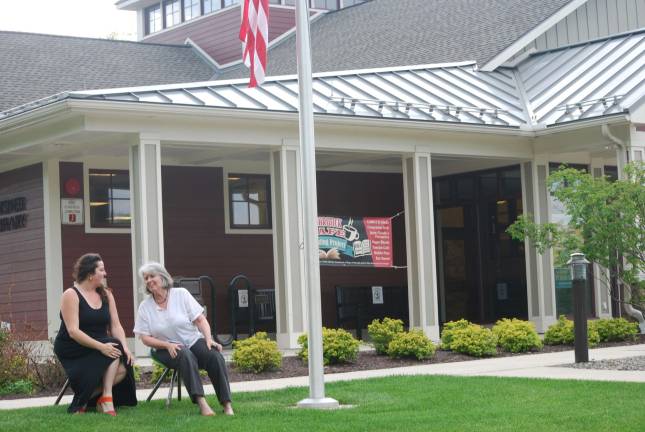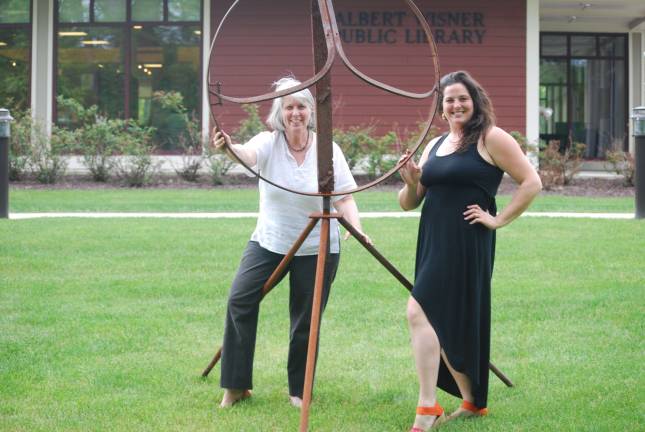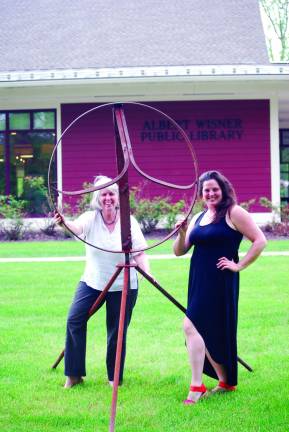Occupy the lawn



W hen the Albert Wisner Public Library was named the Best Small Library in America, it struck me as more of an affirmation of the obvious than a major coup. The library is an institution. It might as well have a pair of stone lions out front.
But the longtime locals know that this award is a big deal, because a decade ago it was unimaginable. The old library “wasn’t up to snuff,” said Rosemary Cooper, the library director. Built in 1927 with a small addition in 1980, the building on Main Street was “completely under-developed for even for the 2000 population.”
But libraries were going the way of the dinosaur anyway, weren’t they? “The internet was going to obliterate our need for anything, including human contact,” Cooper said dryly, recalling the arguments leading up to the referendum on an $8.5 million bond for a new library.
Nine years later, bringing home “the Heisman for libraries,” said Cooper, is “validation that the library has literally transformed the community.”
Originally I was going to write about the building’s green features, namely the geothermal heat pump that runs water through 51 wells drilled under the parking lot.
But that’s kind of a dry subject, Cooper laughed. She pitched me another angle: the library as a spark, for creativity, for new ideas, where people can explore all kinds of interests. A big part of what clinched the award was the way — the many ways — the library engages with the community. Sure, the library moves 300,000 items a year, but it has also emerged as the town’s cultural center. As if to prove the point, just then a high schooler called to see if she could shoot a video in the community room, and a woman dropped off her original painting.
When the new building opened, the arts community wanted to turn one room into a dedicated gallery, said Cooper. She couldn’t quite do that. What she did do was hang art on the walls — lots of it. The day Cooper showed me around, three shows were running simultaneously: in the board room, on the main floor, and in the community room, where Bill Leonardi, a retired pilot, had sold six of his paintings.
“That wouldn’t happen in a gallery,” said Cooper.
The idea is not to put up a couple big-name artists (which a small library couldn’t afford to do, anyway) but to use the space so art can be showcased and seen by as many people as possible. “One thing we don’t do,” said Cooper, “is accept a gift of art.”
The exception to that rule is a fountain outside, made of harrow discs that were once an antique plow. The sculptor is Amy Lewis, the dynamo behind Agrisculpture, which turns old farm equipment into art. When she heard from Lewis two years ago, Cooper knew: “The art just made sense.”
Lewis’ art, rooted in the agricultural history that defines this community, is practical, kid-friendly, and light on the environment at every turn. The peace signs pictured above, for instance, come apart to fit in her Jeep Liberty so she can lug them around in one trip instead of three.
Once the fountain was flowing, Lewis took it upon herself to spearhead an outdoor sculpture exhibition, which will rotate twice a year. The first show, coming in October, is called Courage in 3-D: Making Ideas Tangible. It will feature a category for first-time artists, like kids and families.
“A five-year-old,” said Lewis, “would not have that opportunity elsewhere.”